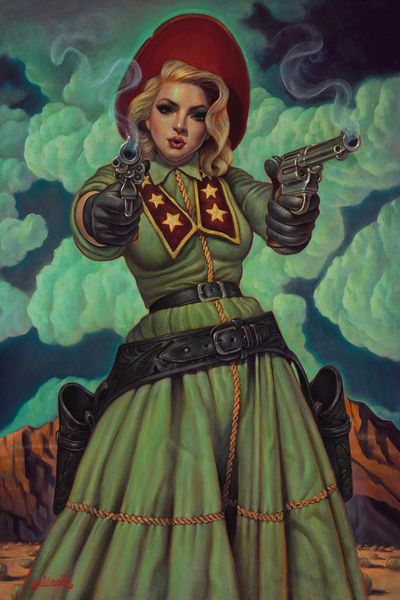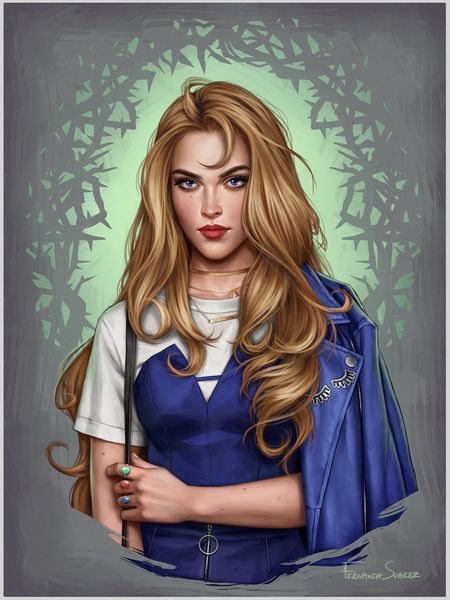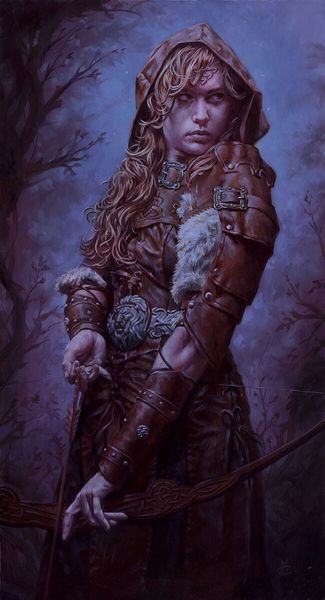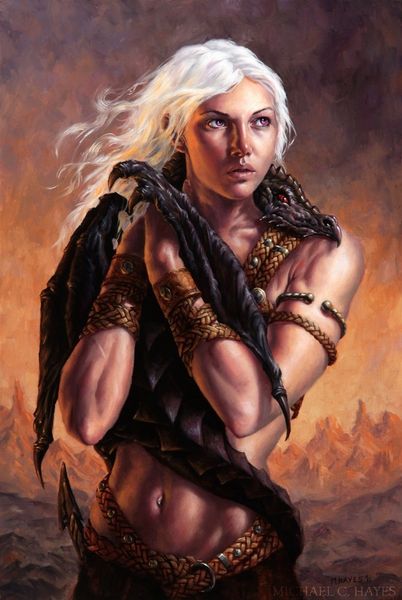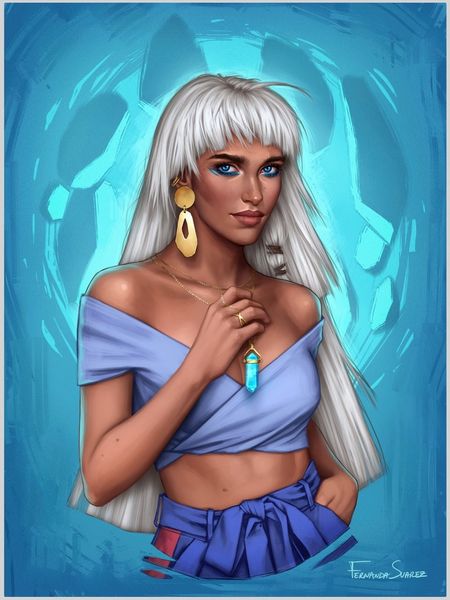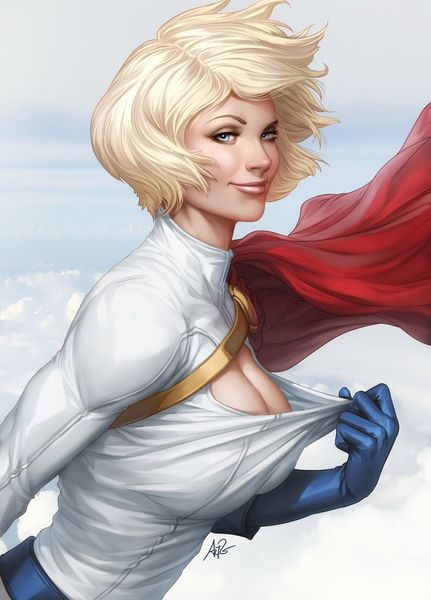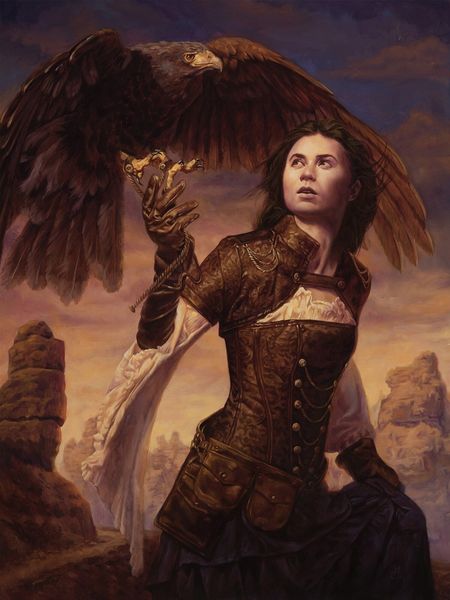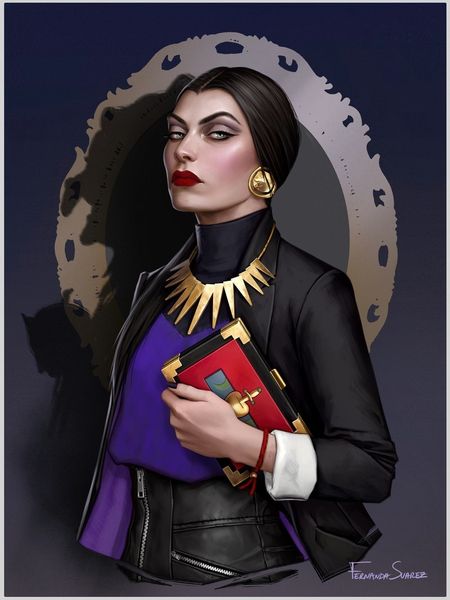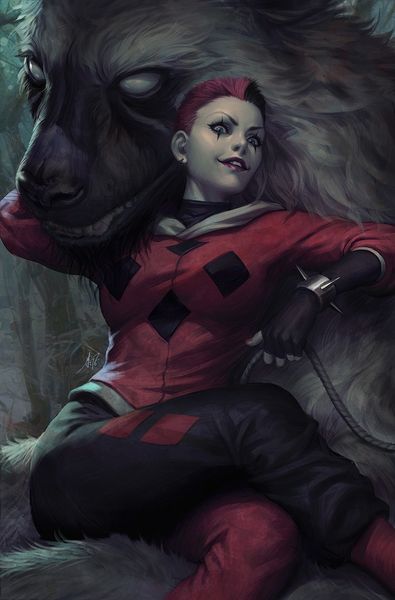
acrylic-paint
#
portrait
#
character portrait
#
acrylic-paint
#
figuration
#
digital-art
#
modernism
Copyright: Modern Artists: Artvee
Curator: Welcome. Here we see Fernanda Suarez’s character portrait, "Jaina Proudmoore". The piece certainly makes a striking impression. Editor: Yes, there’s an immediate tension created between the formal qualities of the portrait and the implied social standing. She looks powerful, fashionable. It's interesting that it seems made with acrylic paint yet it appears like digital art. Curator: Absolutely. And Suarez offers a reframing, or perhaps more accurately, a reclamation, of the traditional portrait. By positioning this character in the visual language of contemporary fashion, we begin to examine the artwork through an intersectional lens that looks at gender, power and representation. Editor: Look at the details: her case, the design, even the studs. These signify not merely status, but specific means of production and, arguably, consumption. Curator: Indeed. There's a dialogue happening here about power, how it's signified through material objects. I read her adornments, even her stern expression, as deliberate commentary. What's traditionally considered "high art" – portraiture – now becomes entangled with commerce. Editor: Consider the material itself, acrylic. Acrylic has a certain accessibility; how might the painting traditions represented be subverted and made available. To the masses and the artist, given the material quality? Curator: The accessibility and its wide usage speak to the work's function of cultural democratization; but this representation also echoes debates around the commodification of art itself. I think we can use this painting as a key into unlocking a wider discourse on the ways value is determined both socially and economically. Editor: It leaves us pondering the ever-shifting and permeable boundaries between art and utility, production and presentation. It also makes us wonder what statement is the artisan trying to evoke through those materials. Curator: Precisely! Suarez encourages us to consider not just *who* is being depicted, but how the historical narrative around gender, power, and class continues to evolve and demand new representational forms. Editor: Very insightful; indeed, something to reflect upon, indeed.
Comments
No comments
Be the first to comment and join the conversation on the ultimate creative platform.
